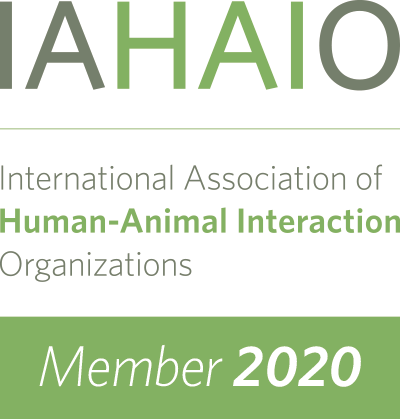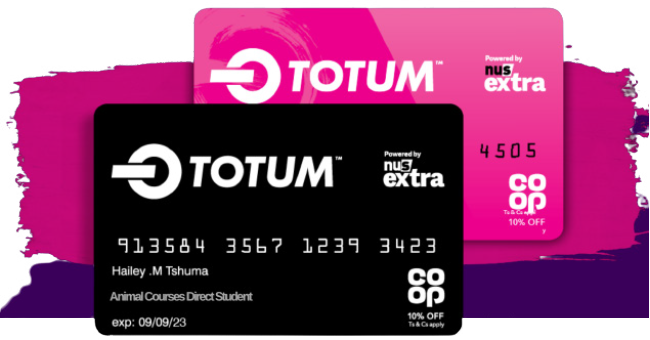Level 3 Diploma in Animal Assisted Intervention
MAKE AN ENQUIRY
| Ofqual Code | 610/4294/8 |
|---|---|
| Qualification Level | 3 |
| Award type | Diploma |
| Guided Learning Hours | 262 |
| Study Mode | Online |
| Start Date | Anytime |
| Enrolment will be valid for | 2 years |
| Entry Criteria | Open to anyone over the age of 16 and learners should be working |
| Assessment Method | Variety of in-depth assessments for each unit |
| Awarding Organisation | SEG |
| Practical Requirement | A practical element with canine interaction is required. The practical element is to be conducted over 2 days and is arranged independently by the learner. Both days will need to be evidenced to complete the full qualification. |
| Certificate Timeframe | On completion of their studies, learners can expect their certification within 6 months following the (EQA) External Quality Assurance of assessment. All course fees, inclusive of all payment plans including our Premium Credit Limited option, must be settled before certification can be ordered. |
| UCAS Points | Contributes to UCAS points* |



About Your Qualification
The Level 3 Diploma in Animal Assisted Intervention has been designed to provide learners with an understanding of animal-assisted intervention and animal-assisted therapy and how these therapies work.
This Ofqual regulated qualification will equip learners with the knowledge and abilities to work alongside all animals supporting animal-assisted interventions and animal-assisted therapy delivered to a variety of individuals and people in groups with different mental and physical disabilities, including visual impairments.
Learning includes the training and selection methods used for different types of therapy animals and the protocols that are critically important to ensuring the welfare of therapy animals. The qualification also covers the history and use of animal-assisted interventions and the legal requirements that relate to these areas.
This qualification will provide learners with the experience to work hands-on with professions within this field and learn the knowledge and skills to further their interest and education within animal-assisted Intervention.
Unit 1
Unit 1: Theory and Historical Use of Animal Assisted Interventions
Learners will understand what defines an animal-assisted intervention and how it is applied to situations. Learners will explore the history of animal-assisted intervention and how human and animal relationships play a huge part in its success.
Unit 2
Unit 2: Lawful Duties of Animal-Assisted Intervention
Learners will understand the essential elements of safeguarding linked to animal-assisted intervention, as well as understanding how laws for lone working apply. Learners will gain an understanding of what is deemed appropriate during protection animal-assisted interventions along with associated regulations and insurance.
Unit 3
Unit 3: Health and Wellbeing Benefits of Animal-Assisted Interventions
Learners will gain an understanding of both the mental and physical disabilities for which animals can provide support. They will explore learning difficulties and neurocognitive disorders and recognise disabilities when operating with animals.
Unit 4
Unit 4: Animal-Assisted Intervention Roles and Responsibilities
Learners will recognise the specific duties of the animal-assisted intervention handlers when working and teaching within this environment. Learners will understand the skills required for animal-assisted intervention handlers along with the relevant codes of practice that apply to animal-assisted interventions. Learners will understand the importance of setting the correct scene for animal-assisted interventions in organisations and how to successfully conduct an animal-assisted intervention session.
Unit 5
Unit 5: Client and Animal-Assisted Intervention Pairing
Within this unit, Learners will understand the importance of correct animal and customer pairing in correspondence to animal-assisted intervention.
Unit 6
Unit 6: The Application of Animal-Assisted Intervention
Learners will recognise the benefits of animal-assisted interventions and will acknowledge how these benefit others. Learners will understand how animal-assisted interventions can be applied to treatment for a variety of disorders and disabilities. Learners will also explore how animal-assisted interventions can be applied to people of all ages, such as children and the elderly. Learners will explore the potential conflicts of animal-assisted interventions.
Unit 7
Unit 7: Animal-Assisted Intervention Process
Learners will recognise the procedure of selecting and teaching suitable animals for animal-assisted intervention. Learners will gain the skills to identify animals that are not appropriate for assisted intervention. Learners will acknowledge the wellbeing requirements of the animals working in animal-assisted interventions along with their usual behaviour, recognising signals of tension. Human body gestures will also be explored within this unit.
Unit 8
Unit 8: Conducting Canine Animal-Assisted Intervention
This unit will allow Learners the opportunity to demonstrate their knowledge in evaluating and teaching canines in animal-assisted intervention. Learners will be able to evaluate suitable techniques for teaching for a single canine and identify their emotional states via body movements. Within this unit there is a practical requirement in which canine interaction will be required. The practical element within this unit is to be conducted over 2 days of practical training arranged independently by the Learner, both days will need to be attended to complete the full unit.
Unit 9
.
Unit 10
.
Working in Animal Assisted Intervention
Animal Assisted Intervention (AAI) is a therapeutic approach that involves using animals to improve a patient's social, emotional, or cognitive functioning. This type of therapy can benefit children, adolescents, adults, and older individuals with mental health needs, and physical or learning disabilities, enhancing their health, well-being, and quality of life.
AAI services utilise a variety of animals, which are selected by trained staff based on their temperament to ensure they are suitable for therapeutic visits. These visits can take place in hospitals, nursing homes, hospices, special needs schools, prisons, and other settings. Dogs are the most commonly used animals due to their ease of transport and generally calm demeanour, which makes them suitable for these environments. In contrast, cats may find such experiences stressful and are less commonly used.
In addition to dogs, other companion animals like horses, reptiles, rabbits, and ferrets can also be used in AAI. Each animal is carefully assessed for behaviour and temperament to ensure they react well to new and potentially unpredictable situations. It is crucial that the animals involved are calm and comfortable interacting with people, and that they also benefit positively from the process.
Careers in AAI not only focus on the therapeutic aspects but also on the care and welfare of the therapy animals. The interventions can vary widely, ranging from long-term arrangements where patients adopt pets, to short-term interactions in structured activities with trained animals.
AAI can be used in managing developmental conditions in children, rehabilitating offenders, and providing therapy for various diseases and disabilities in both children and adults. Through these interventions, AAI aims to improve the overall quality of life for those involved.
Register My Interest

GET YOUR NUS EXTRA/ TOTUM CARD
All students who complete qualifications from level 3 or above are eligible for the NUS extra / Totum Card, which gives you access to over 200 UK student discounts with brands like Co-op, Amazon and ASOS. Apply and find out more at https://www.totum.com/
















